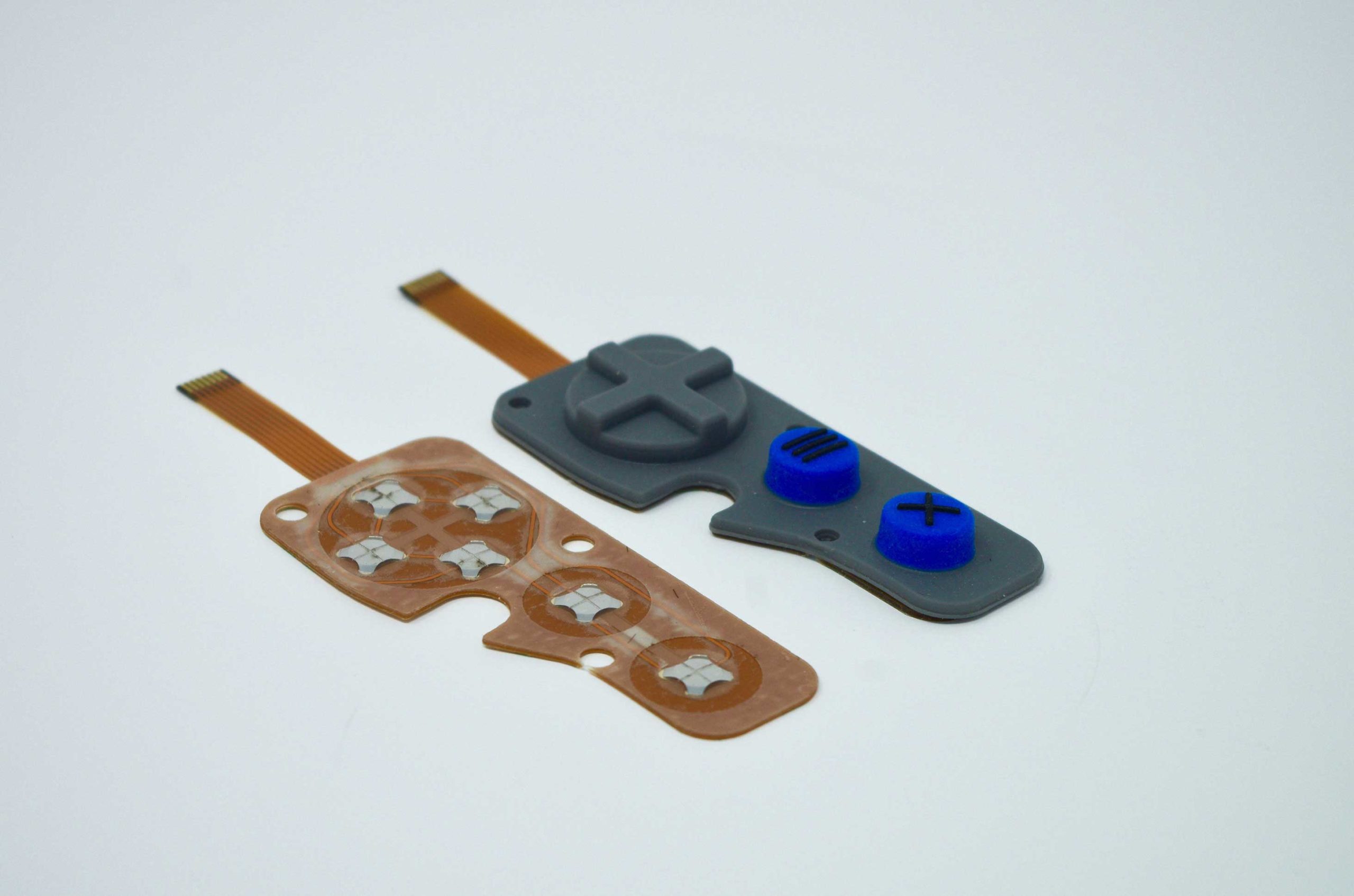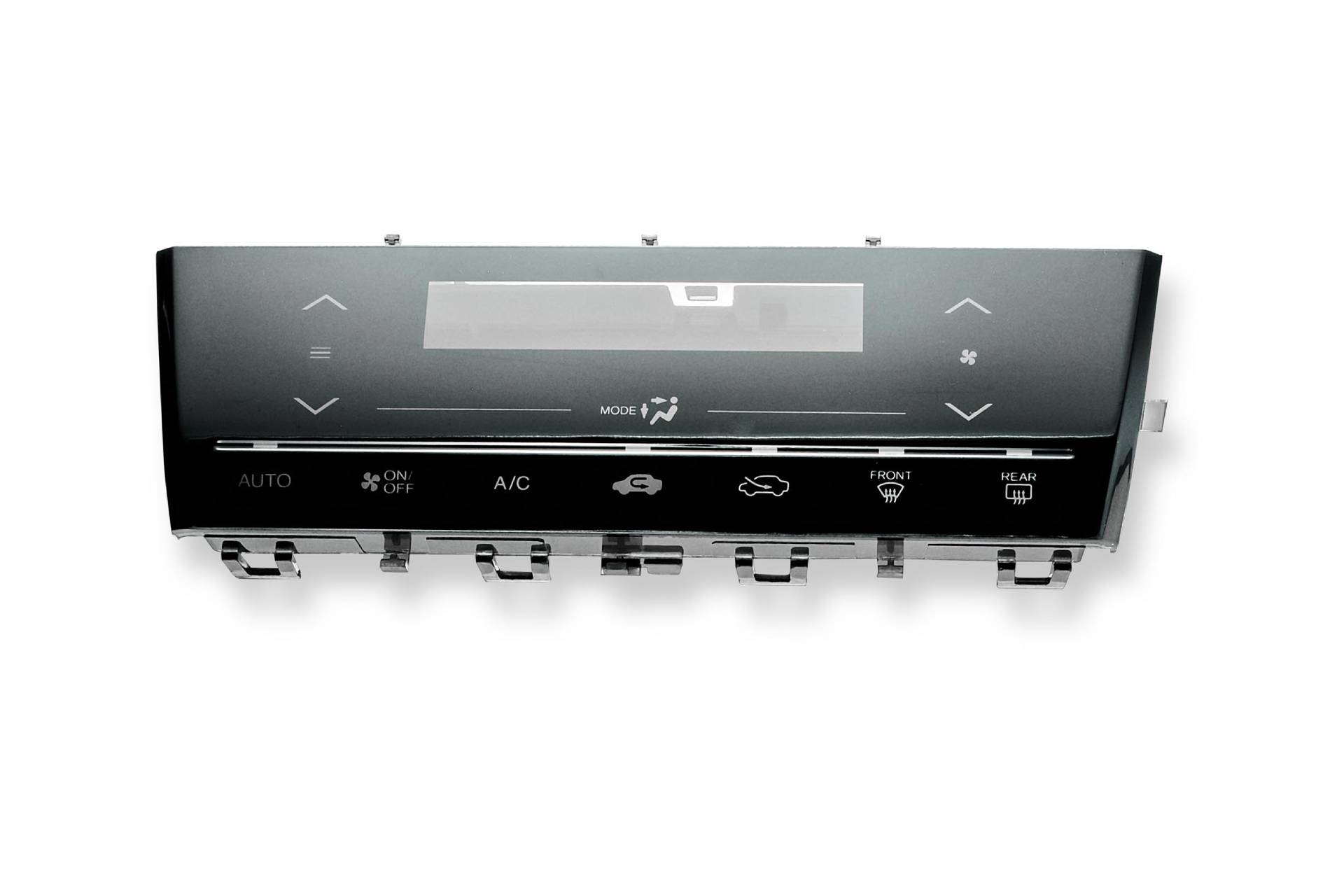A Comprehensive Overview to the Manufacturing and Handling of Rubber Keypads for Ideal Efficiency
The production and processing of rubber keypads play a necessary role in their performance and functionality. Product choice, layout accuracy, and sophisticated production techniques significantly influence their toughness and effectiveness. Comprehending these components is essential for producing high-grade products. As various developments emerge in this area, exploring their implications can expose new requirements for functionality and individual experience. What vital aspects will shape the future of rubber keypads?
Comprehending Rubber Keypads: Materials and Kinds
Rubber keypads are crucial parts in many devices, offering an equilibrium of toughness and responsive feedback. These keypads are largely made from silicone or synthetic rubber, products chosen for their flexibility and resilience. Silicone rubber, specifically, is favored for its outstanding temperature level resistance and long life, making it excellent for various applications, from consumer electronic devices to industrial equipment.
There are numerous types of rubber keypads, including dome switch keypads, which utilize a dome-shaped device that provides tactile comments when pushed. In addition, there are also flat keypads, which feature a smooth surface area and are frequently utilized in clinical tools and remote controls. The option of material and kind affects the keypad's performance, really feel, and general individual experience. Comprehending these facets is important for developers and makers intending to develop reliable and efficient user interfaces in their items.
The Manufacturing Process: From Style to Production
The manufacturing procedure of rubber keypads includes several essential stages, beginning with design and finishing with manufacturing. Designers develop detailed requirements and models, guaranteeing the keypad fulfills visual and functional needs. Computer-aided style (CAD) software application is commonly utilized to picture the design and attributes before proceeding.
As soon as the style is finalized, product option is important, with choices typically consisting of silicone or all-natural rubber. In the following stage, molds are developed based on the approved designs, which will certainly form the keypads throughout production.
Adhering to mold creation, the manufacturing phase starts, where rubber is blended with additives to improve performance. The mix is after that poured right into mold and mildews and subjected to warm and stress, permitting it to solidify and heal.
The ended up keypads undertake top quality checks to confirm they fulfill recognized requirements, followed by packaging for distribution. This comprehensive procedure warranties peak efficiency in the final item.
Key Methods in Rubber Molding
In the domain of rubber keypads, various molding techniques play a crucial role in identifying the high quality and performance of the end product. One common approach is compression molding, where raw rubber is positioned in a warmed mold and stress is used, enabling effective automation and uniformity. An additional considerable method is injection molding, which involves infusing warmed rubber right into a mold and mildew, providing higher precision and complex shapes. Transfer molding, a crossbreed of both approaches, is also utilized, especially for intricate designs, as it integrates the benefits of both procedures. Furthermore, liquid silicone rubber (LSR) molding is acquiring traction due to its adaptability and sturdiness, making it optimal for high-performance applications. Each method has unique features, influencing aspects such as cycle time, material waste, and manufacturing costs. Picking the suitable molding strategy is essential for accomplishing peak efficiency in rubber keypads.
Surface Finishing and Texturing Options
Surface finishing and texturing alternatives play a crucial function in improving the responsive experience and visual charm of rubber keypads. Makers use numerous methods to develop distinctive surface area attributes that influence customer communication and product design. Common completing techniques consist of matte, shiny, and satin finishes, each offering different aesthetic results and hold degrees. Texturing alternatives, such as raised patterns, grooves, or stippling, further enhance capability by boosting traction and reducing slippage throughout usage.
Furthermore, certain structures can be tailored to fulfill ergonomic demands, giving convenience during prolonged use. The option of surface area coatings and textures can be influenced by the intended application of the keypad, whether it be for consumer electronic devices, automobile controls, or commercial gadgets. Eventually, cautious consideration of these alternatives adds substantially to customer satisfaction and overall product efficiency, making them crucial elements in the design and manufacturing procedure of rubber keypads.
Quality Assurance Actions in Rubber Keypad Manufacturing
Quality assurance actions in rubber keypad manufacturing are vital for guaranteeing item reliability and performance. These procedures include product selection standards, rigorous screening treatments, and stringent final inspection standards. With each other, they create a detailed structure that assists makers maintain quality throughout the production procedure.
Material Selection Standards
Choosing the proper materials for rubber keypads is essential, as it directly impacts their capability, customer, and sturdiness experience. Trick requirements for product choice consist of tensile strength, strength, and environmental resistance. The selection of rubber substance, such as silicone or thermoplastic elastomer (TPE), plays a vital role in accomplishing wanted responsive responses and longevity. Furthermore, elements like chemical compatibility, temperature security, and UV resistance need to be taken into consideration to ensure maximum efficiency in different applications. Suppliers need to additionally evaluate the ease of processing and cost-effectiveness of products, stabilizing high quality with budget plan constraints. Inevitably, the best product selection not only improves the keypad's performance but likewise contributes to overall item top quality and customer contentment.
Evaluating Procedures Applied
After establishing the ideal products for rubber keypads, extensive screening treatments are applied to verify that the last products meet industry standards and customer expectations. These procedures generally include mechanical testing, which evaluates the Continued longevity and elasticity of the rubber under different conditions. Additionally, ecological screening analyzes the keypads' performance under temperature fluctuations, moisture, and exposure to chemicals. Electrical testing validates the keypads work properly with digital parts, verifying responsiveness and conductivity. Responsive responses is assessed to assure customer complete satisfaction. These substantial screening measures are necessary in identifying any kind of incongruities or issues prior to automation, eventually enhancing the dependability and efficiency of rubber keypads in their designated applications.

Last Assessment Requirements
Extensive last inspection standards are essential in rubber keypad manufacturing to ensure that each device fulfills the specified requirements for capability and look. This procedure typically includes aesthetic assessments to determine any surface issues, such as discoloration or flaws. In addition, responsive evaluations ascertain that the keypads react accurately to touch, maintaining the required degree of level of sensitivity. Resilience tests might additionally be conducted, imitating long term use to validate the longevity of the keypad under different problems. Adherence to market policies and client specs is validated to keep top quality assurance. By implementing these rigorous examination actions, suppliers can substantially lower the risk of defects, guaranteeing that the end product is trustworthy and satisfies consumer expectations, ultimately boosting customer satisfaction.
Developments in Rubber Keypad Innovation
As modern technology remains to progress, innovations in rubber keypad modern technology are reshaping interface across different sectors. One considerable improvement is the combination of capacitive touch sensing units within rubber keypads, permitting a more responsive and functional individual experience. This innovation makes it possible for users to communicate with gadgets via touch, boosting performance without compromising the tactile comments that rubber keypads are known for.
Furthermore, enhancements in material solutions have resulted in the advancement of even more long lasting, weather-resistant rubber, making keypads appropriate for commercial and exterior usage. Improved printing methods also permit for high-resolution graphics and backlighting options, increasing presence and aesthetic charm.

Furthermore, innovations in manufacturing procedures, such as 3D printing, are enabling customized styles and fast prototyping, streamlining manufacturing timelines. These developments collectively contribute to extra user-friendly and effective rubber keypads, ensuring they satisfy the needs of contemporary applications while maintaining their core benefits.
Ideal Practices for Style and Functionality
Designing effective rubber keypads needs mindful evaluation of both visual appeals and functionality. Rubber Keypads. A well-designed keypad must stabilize ergonomic principles with visual charm to improve individual experience. Key elements consist of size, form, and spacing of switches, guaranteeing they are very easy to press while preventing unintentional activation. Making use of contrasting appearances and colors can enhance presence and tactile feedback, aiding individuals in comparing keys
Furthermore, the option of materials plays a crucial role; high-grade rubber substances can enhance toughness and resistance to put on. It is additionally crucial to consider the combination of attributes such as backlighting and customized graphics, which can boost use in different environments.
Lastly, prototyping and customer screening are vital in the design procedure, permitting adjustments based upon real-world feedback. By sticking to these best practices, producers can produce rubber keypads that not just look appealing but also satisfy the practical demands of individuals properly.
Often Asked Inquiries
How Do I Choose the Right Rubber Product for My Keypad?
To select the appropriate rubber product for a keypad, one ought to take into consideration aspects such as sturdiness, environmental resistance, responsive responses, and compatibility with the desired application, ensuring suitable efficiency and user complete satisfaction in different conditions.
What Are the Ecological Effects of Rubber Keypad Production?
Rubber keypad manufacturing can lead to environmental impacts such as logging for natural rubber sources, contamination from chemical processes, and try these out waste generation. Lasting techniques and materials can mitigate a few of these unfavorable impacts on ecosystems.
Can Rubber Keypads Be Recycled or Reused?
Rubber keypads can be reused, however the process relies on the particular products used in their manufacturing. Reusing them in various applications is also possible, adding to waste decrease and promoting sustainability in producing techniques.
What Is the Average Life-span of a Rubber Keypad?
The typical life-span of a rubber keypad commonly ranges from 5 to 10 years, depending upon usage, environmental variables, and upkeep. Routine treatment can extend its performance, while extreme wear may shorten its resilience.
Are There Any Kind Of Health And Wellness Concerns Connected To Rubber Keypad Materials?
There are potential wellness worries connected to rubber keypad products, including allergies to specific chemicals and irritants made use of in production. Proper handling and awareness of product composition can alleviate these dangers for users.
There are a number of kinds of rubber keypads, including dome switch keypads, which use a dome-shaped system that offers responsive feedback when pressed. Choosing the suitable products for rubber keypads is important, as it directly affects their individual, durability, and performance experience - Rubber Keypads. After establishing the appropriate products for rubber keypads, rigorous testing treatments are implemented to verify that the last items meet industry criteria and client expectations. Rubber keypad production can lead to environmental impacts such as logging for all-natural rubber sources, air pollution from chemical site here processes, and waste generation. Rubber keypads can be recycled, however the procedure depends on the certain products made use of in their production